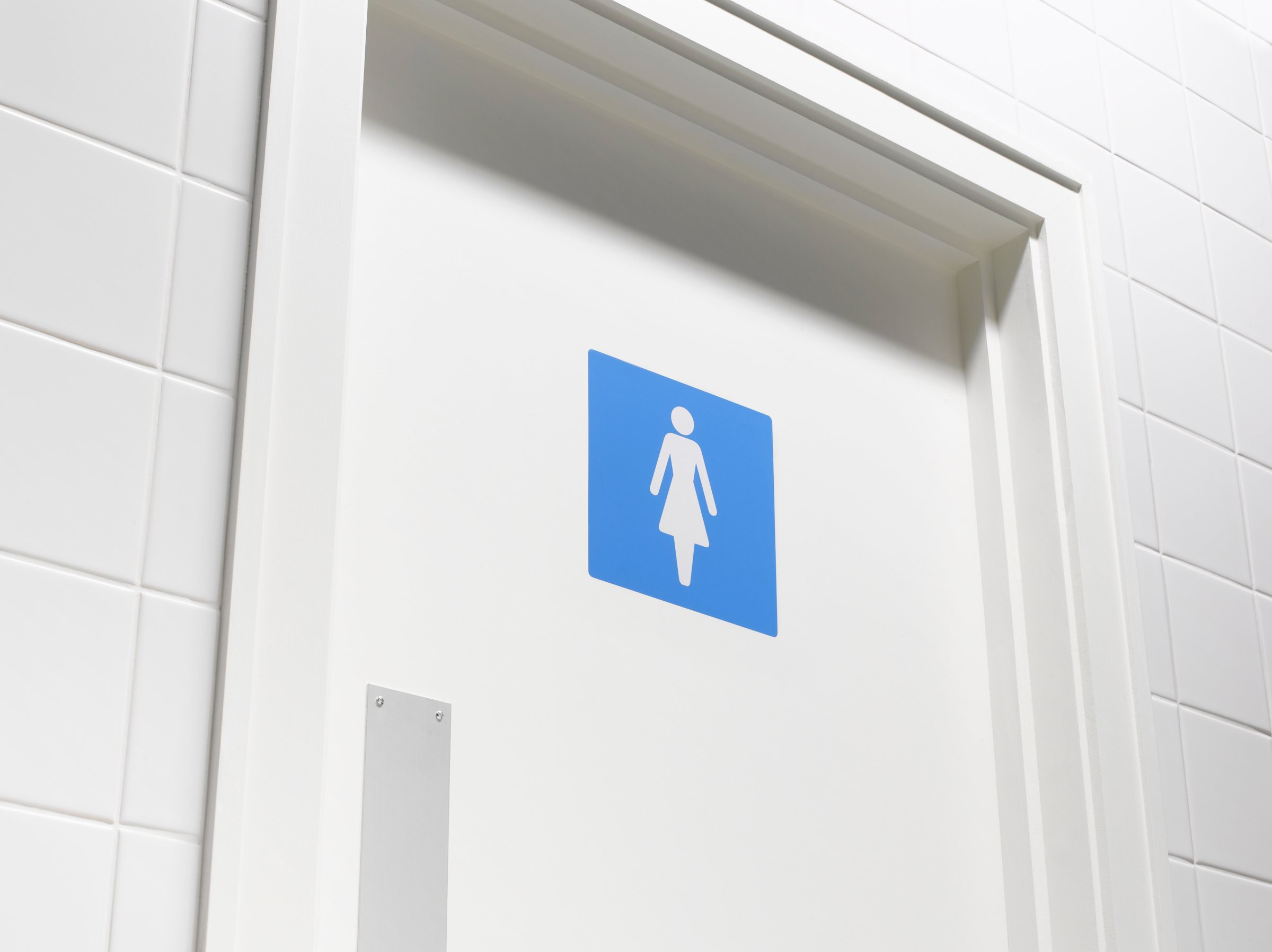
I hate using public restrooms. Airports and rest stops are my least favorite. I avoid locker rooms whenever possible. But really every restroom is bad. In fact, it happened to me just the other day in my fancy office building in New York City. I was at the sink, washing my hands, when a woman walked into the restroom and did a double take, first looking at me and then looking back at the sign on the still-open door of the restroom. Was she in the wrong place? Or, implicitly, was I?
I am a biological female who identifies as a woman. I am not, for any intents or purposes, transgender. But as a non-gender conforming butch lesbian, I have my own tiny window into our nation’s current political debate about bathrooms—the always looming fear that easily slips into shame, and the occasional outright harassment, all because I have to pee. And that’s from using the bathrooms that I “should” be using according to vicious anti-transgender bills sweeping the nation.
The first time I was actually yelled at in a bathroom, at least that I can remember, I was 19 years old. I was, and still am, 6’1″, but back then I had straight shoulder-length hair that dangled as awkwardly around my chin as everything else about me at that age. I was openly gay but still otherwise finding myself. I still wore dresses sometimes. Also awkwardly. I was a study abroad student in England on vacation in Bath. I don’t remember much of anything from the entire semester, but I remember going into some lavish hotel along the beach to use the bathroom and, while I was washing my hands at the sink, getting yelled at by a group of women.
One of them, standing next to me at the sink, yelled to her friends in the stalls: “There’s a boy in here!”
As the others came out, they loomed at me and shouted things like: “What are you doing in here?” and “You’re in the wrong place!”
And in a sense, they were right. It turns out the women were all part of a bridal shower, wearing those most conventionally feminine pastel dresses to participate in that most quintessentially heteronormative of traditions. They belonged—in that bathroom and in society more broadly—and I most certainly didn’t. And still don’t.
Whatever you might have heard to the contrary, the “bathroom bills” that have passed in North Carolina and Mississippi and are now pending in other states have nothing to do with public safety. The simple fact is that under existing laws, it is already a crime to dress up as a man or woman in order to falsely gain entry to any public restroom to harass or harm anyone. That is a crime in states with transgender legal protections and a crime in states without such laws. Fox News anchor Chris Wallace noted that such crimes have not taken place in communities that have transgender rights laws.
Read More: 2 People Affected by North Carolina’s Bathroom Bill Speak Out
What these “bathroom bills” are actually about is enforcing traditional gender codes and norms in an increasingly diverse and shifting America. Single-sex restrooms just like single-sex dormitories have always been rooted in compulsory heteronormativity and the sense that we have to protect women from men who can’t expect to be reigned in. This still echoes today, as when an all-male elite club at Harvard University suggested that allowing women to join would increase the potential for sexual assault. And notice that no one seems to worry about pedophiles being forced to use the little boy’s room instead. The point is that girls need protecting.
And femininity must be protected, too. Or even enforced. A video that recently went viral shows a woman being forcibly evicted from a restroom because she looks more masculine. Should women not only have to be born women to use the ladies room but wear skirts? Maybe have their hair a certain length and curled?
Read More: Mark McKinnon: The GOP Hasn’t Learned Its Lesson on Equality
That moment in the restroom in England, I blurted out something like “I am a girl!” and then rushed out in tears. I wiped my eyes and pretended with my friends that it was no big deal, joking that I should have flashed the women my breasts and said: “Here are my ID cards!” And I’ve thought of a million more clever comebacks ever since. But it was a big deal, and it still is. Those women weren’t just confronting my right to pee but my right to belong—my right to be just as much female as they were, even if I wasn’t female in their exact way. They were questioning my right to feel like I was in the right place and the right body not because they decided I was but because I did.
That may scare the hell out of some people, that people born as men can transition to being women and women can be women and wear men’s clothes. But it’s a form of liberty and freedom—the sort our nation was supposedly founded on and we’re just now getting around to extending to everyone besides straight white men. I try to remember that, and to feel brave and confident, in my own skin, in my own style, in my own stall, every time I have to pee.
More Must-Reads from TIME
- Why Trump’s Message Worked on Latino Men
- What Trump’s Win Could Mean for Housing
- The 100 Must-Read Books of 2024
- Sleep Doctors Share the 1 Tip That’s Changed Their Lives
- Column: Let’s Bring Back Romance
- What It’s Like to Have Long COVID As a Kid
- FX’s Say Nothing Is the Must-Watch Political Thriller of 2024
- Merle Bombardieri Is Helping People Make the Baby Decision
Contact us at letters@time.com